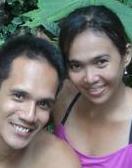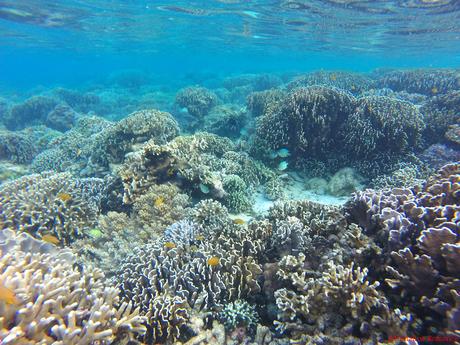
Have you seen the National Geographic documentary film Aftermath: Population Zero? The feature gives us an insight of what happens to Earth, including its plant and animal life, if all of humanity suddenly vanishes. Without a single human to destroy and pillage natural resources, the planet truly heals and becomes a bustling biological paradise. We found evidence of that no-human-intrusion healing process in Colase Marine Sanctuary, located within the rustic town of Samboan in southern Cebu.
Samboan is known for Aguind Falls, its most popular natural attraction. However, the municipality has so much more to offer. Irwin Gamallo, Samboan’s tourism officer, invited us and Alexa to visit and discover other natural attractions that makes Samboan an eco-tourism capital. His invitation was fully supported by Mrs. Victoria Calderon, chairperson of the Samboan Tourism and Heritage Council and the wife of Samboan Mayor Joseph Calderon.
Interestingly, Sweetie’s mother, whose birthday coincided with our trip, decided to come with us so she could experience our adventuring life.
We departed Cebu at Saturday, 5 PM. After a 4-hour bus ride, we arrived at the poblacion of Samboan where Irwin took us to our accommodation, a lovely room at Mayor Calderon’s seaside guest house. A home-cooked dinner and a cool shower awaited the tired and hungry travelers.
Although we were facing west, we woke up at 5 AM to see the early morning activities at the shore. It was still dawn, but fishing boats of all sizes have begun docking at the shore. People in the barangay wake up early and eagerly flock to the shore for the arrival of these boats. Doing so allows them to purchase the freshest catch at the lowest prices.
The haul of the bigger boats are then transported to the public market where they are sold at a higher price.
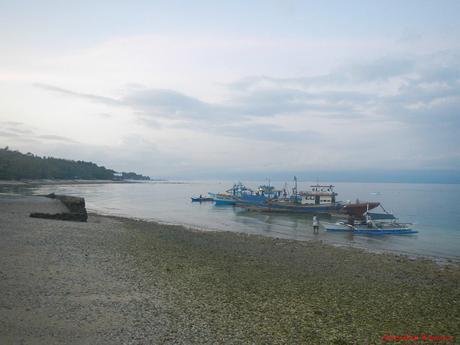
At around 6:30 AM, our driver fetched us and took us to Samboan’s scenic Poblacion, or town center. Samboan is the second southernmost municipality in Cebu; getting there from Cebu City requires a 140-kilometer, 4-hour bus ride. The municipality is surprisingly rich in natural and cultural treasures.
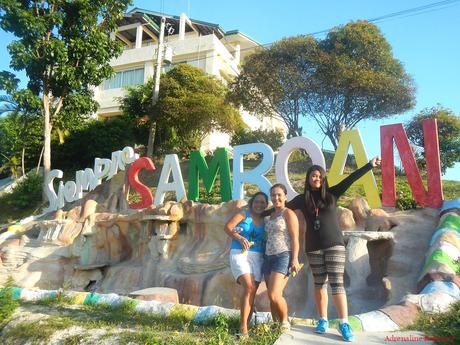
Sir Irwin met us at the lively Samboan Public Market where we had a traditional, filling Filipino breakfast of tinolang isda (fish broth with spring onions, onions, and chillis), paklay (stewed pork innards), hard-boiled eggs, pan de sal, and coffee. For adventurers, the market is one of the best places to get authentic specialties of a region without breaking the bank.
We love visiting town markets like these where we can buy cheap ingredients and observe local culture.

Burping our breakfast away, we drove for 15 minutes and headed straight to Barangay Colase, our first destination for the day. Barangay Colase is home to one of the most well-preserved marine sanctuaries we’ve ever visited.
Due to lack of attention over the years, the sanctuary’s visitor’s center and watch station have begun to deteriorate. However, the structures are already there, and it will just take some rehabilitation to make them functional again.
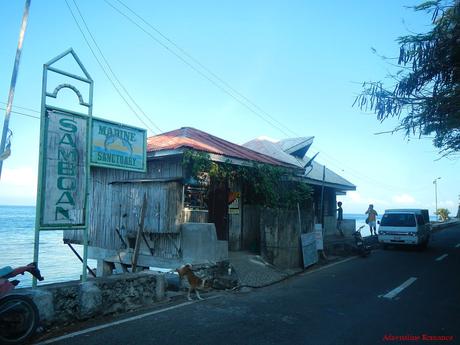
Do not expect a nice sandy beach. The marine sanctuary’s shoreline is made of pebbles, rocks, and washed-up dead corals and seashells. There are, however, nice spots of beach that are covered with coarse sand.
Also, check the long concrete seawall at the right side of the photo. Above that seawall is the highway, which means that Colase Marine Sanctuary is very accessible. Thus, it has all the necessary ingredients of being a very attractive and successful eco-tourism destination.
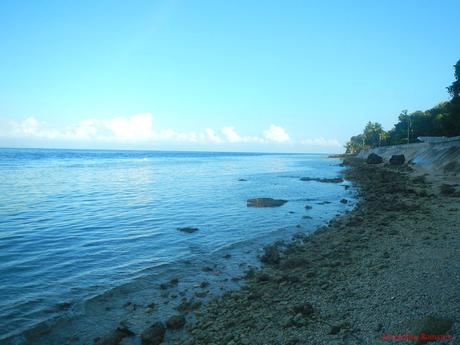
If the beach does not impress you, then the seascape definitely will. The marine sanctuary overlooks a scenic vista of beautiful Tanon Strait and the blue mountains of Negros. On a clear day, one can see Mt. Talinis in its full majesty.

Sweetie and I excitedly donned on our snorkel gear and entered into the cool, crystal clear water. Do you know how clear it is? Check out the photo below. You can clearly see the corals underneath the water’s surface.
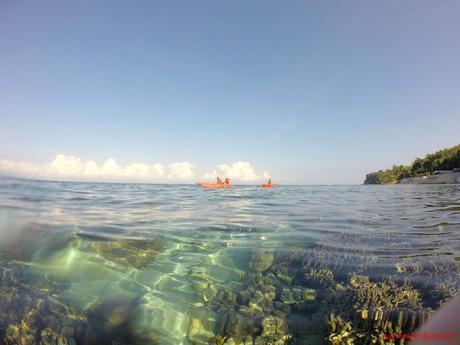
We just waded less than ten feet away from the waterline in knee-deep water, but we already encountered a large number of soft corals. Take a look at them; they are all very much alive and undamaged!
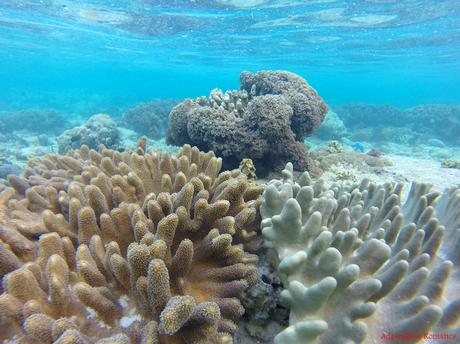
This coral looks like the massive horns of a moose!
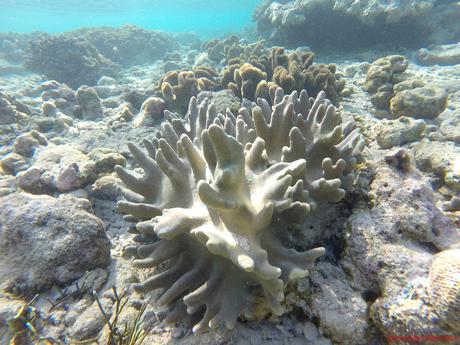
Spiky staghorn corals grown in large clumps along with other types of corals. Relatively undisturbed by human presence, these corals thrive even in the shallowest areas of the foreshore.
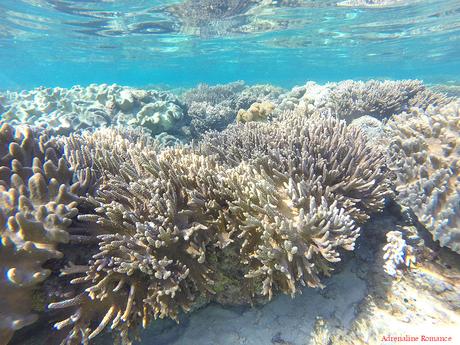
Check out that very healthy, pretty starfish. Remember that at this point, the water is still thigh-deep.
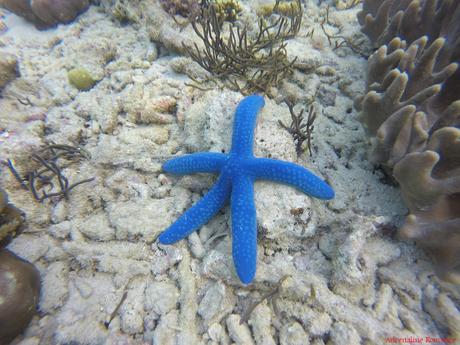
As we swam to deeper water, we found bare areas of fine white sand between coral fields. We were utterly amazed at the massive coral field that lay just in front of us.
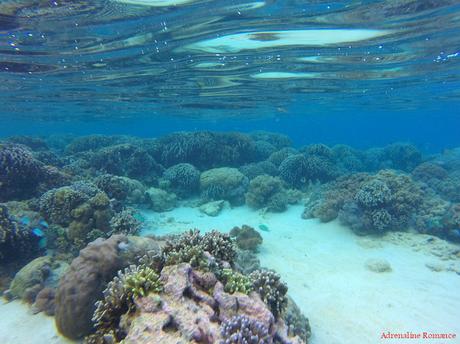
Just look at those lovely hard corals! It’s very obvious that they are healthy and alive.
At this point, the water is only waist deep. Physical contact with the corals, which should be avoided, is a real possibility. Therefore, snorkelers, especially those who are not yet proficient in controlling their buoyancy, are strongly advised to wear PFDs or life jackets to avoid touching the corals.
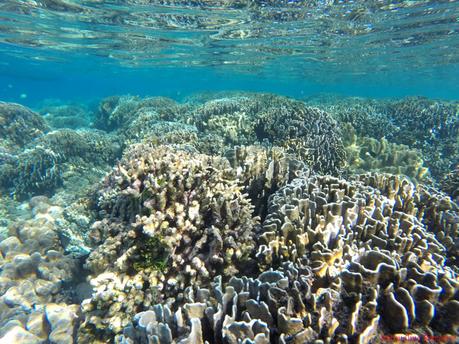
More healthy soft corals! Their branches sway gently together with the current. Corals make perfect hideaways for fish, crabs, mollusks, and other denizens of the sea.
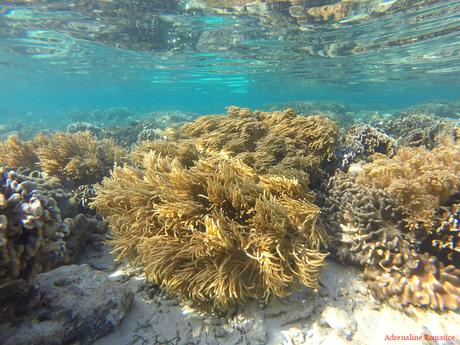
This is a perfect example of synergy and cooperation. A small but tough brain coral protects a delicate sea anemone from the brunt of the current. The sea anemone, with its stinging tentacles, protects clownfish from predators.
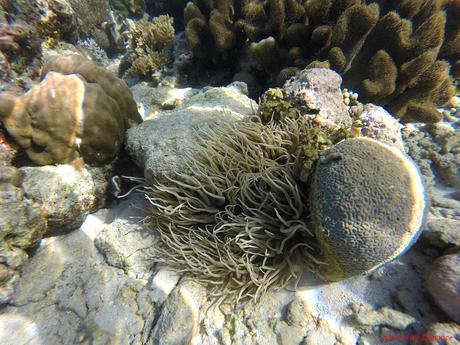
Look at those strangely-shaped perwingkle-colored corals! The world beneath the sea is utterly vibrant!
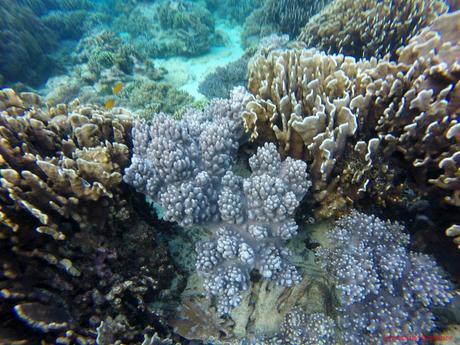
With the Colase Marine Sanctuary so close to the highway and civilization, we can’t help but wonder how it was able to thrive with very little damage. According to Irwin, the entire coastline was declared a protected area two decades ago; the declaration is still in effect up to the present day. The protection status prohibited locals from fishing in the area.
Deprived of their usual fishing grounds and unwilling to break the law, the fisherfolks looked for other places to fish, leaving the coastline undisturbed. The absence of human intrusion allowed the corals to survive and flourish.
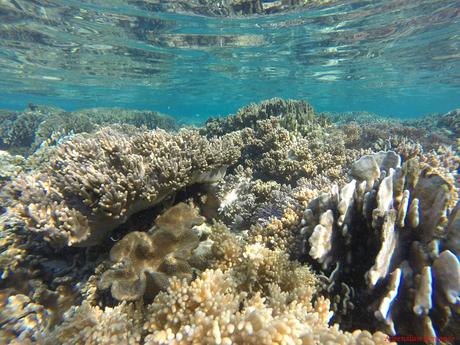
Check out that large school of fish ahead. Flourishing and undamaged corals are essential in the functioning of a thriving marine ecosystem. They serve as shelters and hunting grounds for innumerable marine species.
Presently, the reef is managed by the Samboan municipal government together with a fisherfolks organization.

Sweetie and I decided to go to deeper water. The deeper we swam, the thicker and healthier the coral fields became. Huge coral fields like these help absorb and dissipate wave energy, protecting shorelines from premature erosion. In fact, many small islands and islets cannot exist without the reefs to protect them.
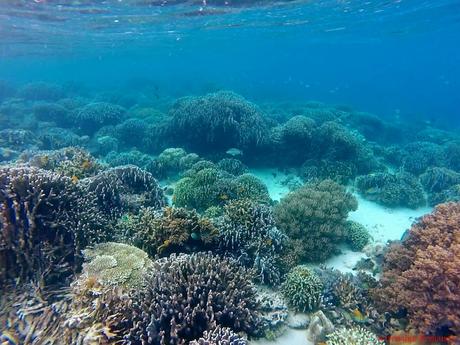
Now I know how swimming in an aquarium feels like. For optimum visibility, it is best to snorkel early in the morning—about 7 to 9 AM—on a clear and sunny day. That’s because the silt on the seabed hasn’t been stirred yet by natural and human activities.
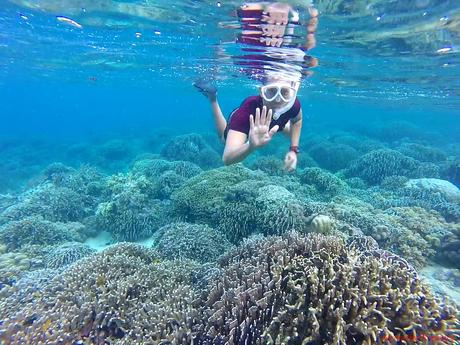
We had so much fun looking at the colorful and interesting denizens of the reef. According to Irwin, there are even sightings of turtles, sharks, and whales coming to visit the reef. We were hoping for an encounter with these magnificent creatures; unfortunately, we didn’t see any cruising by.
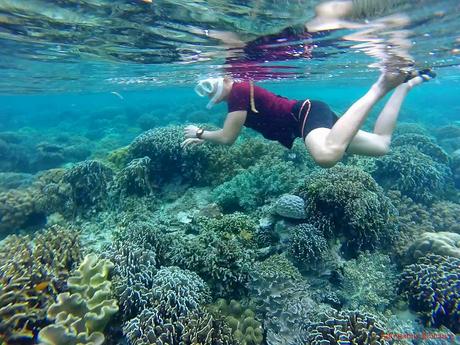
Hi, there, little fish! Your home is so beautiful! This is just a very, very small part of the reef; we just snorkeled around an area of just a few square yards. Yet, we already saw a colossal diversity of sea life.
Thus, if you include the adjoining reefs of Bonbon, Tanbo, Suba, Poblacion, and other coastal barangays of Samboan with Colase, you will realize that Samboan has one gigantic coral reef system that needs to be treasured and preserved.
We snorkeled for an hour before we decided it was impossible to cover the entire reef.

Here’s a short video of our first visit to this magnificent marine sanctuary. You can probably see that it is indeed a majestic place.
The Colase Marine Sanctuary is an excellent example and standard of successful marine ecosystem preservation. The corals are so well preserved that it is difficult to imagine that this was once a fishing ground. The entire place is teeming with vibrant marine life , and there seems to be no border to this bustling underwater biological city.
With the right mechanisms, political machinery, and laws in place, there is no doubt that Samboan will have a real, world-class, and sustainable eco-tourism destination.
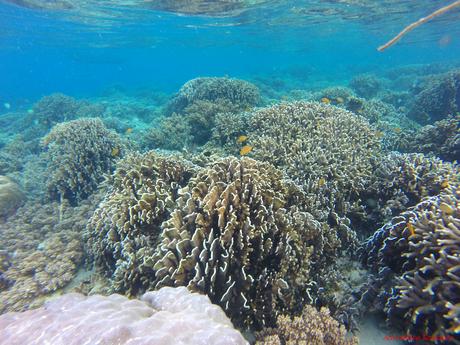
Tips to follow
